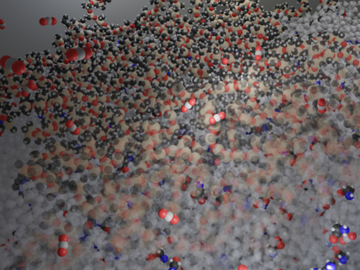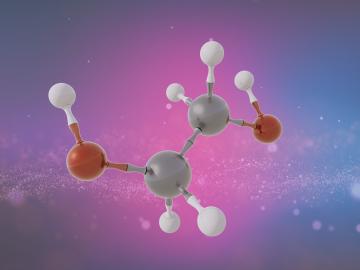
Filter News
Area of Research
- Advanced Manufacturing (2)
- Biology and Environment (71)
- Computational Biology (1)
- Computational Engineering (3)
- Computer Science (6)
- Electricity and Smart Grid (1)
- Energy Science (93)
- Fusion and Fission (16)
- Fusion Energy (9)
- Isotopes (6)
- Materials (50)
- Materials for Computing (7)
- Mathematics (1)
- National Security (15)
- Neutron Science (13)
- Nuclear Science and Technology (5)
- Quantum information Science (1)
- Sensors and Controls (1)
- Supercomputing (46)
News Type
News Topics
- (-) Biomedical (41)
- (-) Critical Materials (25)
- (-) Environment (126)
- (-) Fusion (35)
- (-) Grid (45)
- (-) Machine Learning (37)
- (-) Mercury (9)
- (-) Polymers (28)
- (-) Summit (32)
- 3-D Printing/Advanced Manufacturing (96)
- Advanced Reactors (27)
- Artificial Intelligence (60)
- Big Data (37)
- Bioenergy (65)
- Biology (74)
- Biotechnology (21)
- Buildings (46)
- Chemical Sciences (57)
- Clean Water (23)
- Composites (26)
- Computer Science (119)
- Coronavirus (34)
- Cybersecurity (26)
- Education (3)
- Element Discovery (1)
- Emergency (1)
- Energy Storage (88)
- Exascale Computing (17)
- Fossil Energy (2)
- Frontier (20)
- High-Performance Computing (55)
- Hydropower (8)
- Irradiation (2)
- Isotopes (38)
- ITER (6)
- Materials (105)
- Materials Science (105)
- Mathematics (8)
- Microelectronics (1)
- Microscopy (39)
- Molten Salt (8)
- Nanotechnology (47)
- National Security (38)
- Neutron Science (91)
- Nuclear Energy (63)
- Partnerships (35)
- Physics (46)
- Quantum Computing (19)
- Quantum Science (48)
- Security (20)
- Simulation (27)
- Space Exploration (13)
- Statistics (2)
- Transportation (74)
Media Contacts

John joined the MPEX project in 2019 and has served as project manager for several organizations within ORNL.

Researchers at ORNL have demonstrated that small molecular tweaks to surfaces can improve absorption technology for direct air capture of carbon dioxide. The team added a charged polymer layer to an amino acid solution, and then, through spectroscopy and simulation, found that the charged layer can hold amino acids at its surface.

A research team led by the Department of Energy’s Oak Ridge National Laboratory demonstrated an effective and reliable new way to identify and quantify polyethylene glycols in various samples.

Brian Sanders is focused on impactful, multidisciplinary science at Oak Ridge National Laboratory, developing solutions for everything from improved imaging of plant-microbe interactions that influence ecosystem health to advancing new treatments for cancer and viral infections.
The contract will be awarded to develop the newest high-performance computing system at the Oak Ridge Leadership Computing Facility.

To better predict long-term flooding risk, scientists at the Department of Energy’s Oak Ridge National Laboratory developed a 3D modeling framework that captures the complex dynamics of water as it flows across the landscape. The framework seeks to provide valuable insights into which communities are most vulnerable as the climate changes, and was developed for a project that’s assessing climate risk and mitigation pathways for an urban area along the Southeast Texas coast.

Researchers at Oak Ridge National Laboratory have opened a new virtual library where visitors can check out waveforms instead of books. So far, more than 350 users worldwide have utilized the library, which provides vital understanding of an increasingly complex grid.

Oak Ridge National Laboratory scientists have developed a method leveraging artificial intelligence to accelerate the identification of environmentally friendly solvents for industrial carbon capture, biomass processing, rechargeable batteries and other applications.

Researchers at Oak Ridge National Laboratory have developed free data sets to estimate how much energy any building in the contiguous U.S. will use in 2100. These data sets provide planners a way to anticipate future energy needs as the climate changes.

Oak Ridge National Laboratory scientists ingeniously created a sustainable, soft material by combining rubber with woody reinforcements and incorporating “smart” linkages between the components that unlock on demand.


